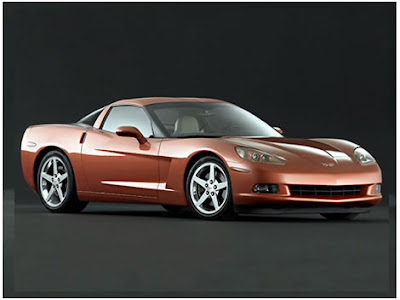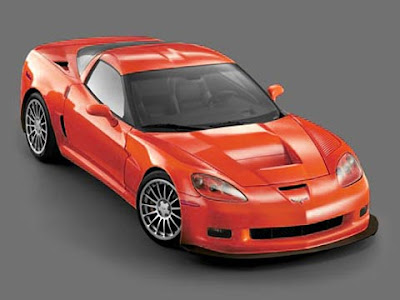The
Chevrolet Corvette is a sports car that has been manufactured by
Chevrolet since
1953. It is built today at a General Motors assembly plant in Bowling Green, Kentucky, but in the past it was built in Flint, Michigan and St. Louis, Missouri. It was the first all-American sports car built by an American car manufacturer. The National
Corvette Museum and annual National
Corvette Homecoming are also located in Bowling Green, Kentucky.
History of Chevrolet Corvette.
While the style of a car may be just as important to some as to how well the car runs, it was not until 1927, when General Motors hired designer Harley Earl, that automotive styling and design became important to American automobile manufacturers. What Henry Ford did for automobile manufacturing principles, Harley Earl did for car design. Most of GM's flamboyant "dream car" designs of the 1950s are directly attributable to Earl, leading one journalist to comment that the designs were "the American psyche made visible." Harley Earl loved sports cars, and GIs returning after serving overseas in the years following World War II were bringing home MGs, Jaguars, Alfa Romeos, and the like. In 1951, Nash Motors began selling a two-seat sports car, the Nash-Healey, that was made in partnership with the Italian designer Pinin Farina and British auto engineer Donald Healey. Earl convinced GM that they also needed to build a two-seat sports car. Earl and his Special Projects crew began working on the new car later that year, which was code named "Opel." The result was the
1953 Corvette, unveiled to the public at that year's Motorama car show. The original concept for the
Corvette emblem incorporated an American flag into the design, but was changed well before production since associating the flag with a product was frowned upon.
Taking its name from the corvette, a small, maneuverable fighting frigate (the credit for the naming goes to Myron Scott), the first
Corvettes were virtually handbuilt in Flint, Michigan in
Chevrolet's Customer Delivery Center, now an academic building at Kettering University. The outer body was made out of then-revolutionary fiberglass, selected in part because of steel quotas left over from the war. Underneath that radical new body were standard
Chevrolet components, including the "Blue Flame" inline six-cylinder truck engine, two-speed Powerglide automatic transmission, and drum brakes from
Chevrolet's regular car line. Though the engine's output was increased somewhat, thanks to a triple-carburetor intake exclusive to the
Corvette, performance of the car was decidedly lackluster. Compared to the British and Italian sports cars of the day, the
Corvette was underpowered, required a great deal of effort as well as clear roadway to bring to a stop, and even lacked a "proper" manual transmission. Up until that time, the
Chevrolet division was GM's entry-level marque, known for excellent but no-nonsense cars. Nowhere was that more evident than in the
Corvette. A Paxton supercharger became available in 1954 as a dealer-installed option, greatly improving the
Corvette's straight-line performance, but sales continued to decline.
GM was seriously considering shelving the project, leaving the
Corvette to be little more than a footnote in automotive history, and would have done so if not for two important events. The first was the introduction in 1955 of
Chevrolet's first V8 engine since 1919, and the second was the influence of a Soviet emigre in GM's engineering department, Zora Arkus-Duntov. Arkus-Duntov simply took the new V8 and backed it with a three-speed manual transmission. That modification, probably the single most important in the car's history, helped turn the
Corvette from a two-seat curiosity into a genuine performer. It also earned Arkus-Duntov the rather inaccurate nickname "Father of the
Corvette."
Another key factor in the
Corvette's survival was Ford's introduction, in 1955, of the two-seat Thunderbird, which was billed as a "personal luxury car", not a sports car. Even so, the Ford-
Chevrolet rivalry in those days demanded that GM not appear to back down from the challenge. The "T-Bird" was changed to a four-seater in 1958. And the
1957 Chevrolet Corvette Bel Air is one of the most recognizable American cars of all time.








.JPG)
.JPG)
.JPG)



























